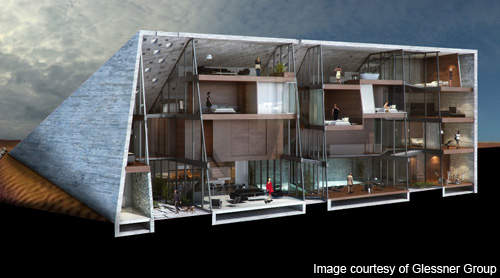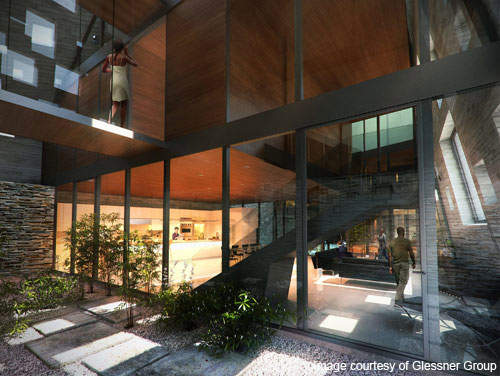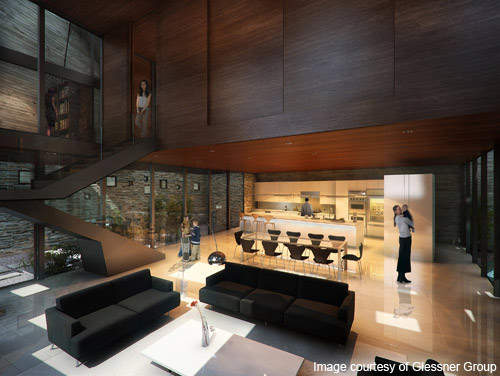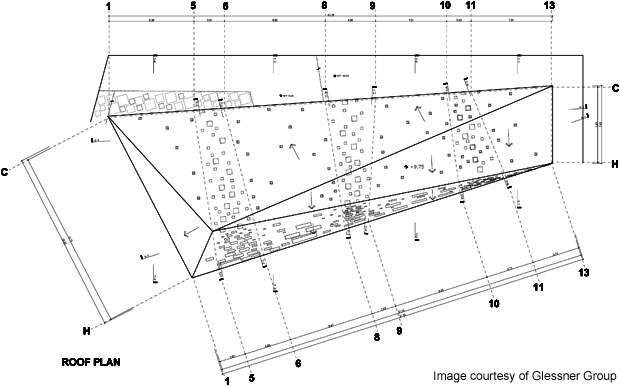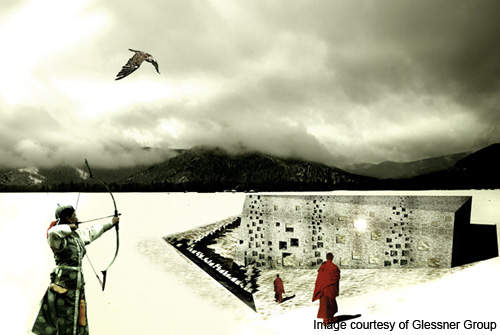Gimme Shelter is a private multifunctional residence, to be built over a total area of 1,000m². The project is located in plot 67 of the Ordos 100 scheme in Inner Mongolia, China. Ordos 100 is a real estate development project conceived by Cai Jiang, a Chinese business tycoon.
Swiss master architects Herzog & de Meuron are building the Gimme Shelter for Jiang Yuan Water Engineering and the Jian Yuan Cultural & Creative Industrial Development.
Herzog & de Meuron selected Rojkind Arquitectos (RA), a Mexican architectural firm, to design Gimme Shelter. Juan Felipe Heredia is the structural engineer.
Ordos is situated in the Ordos Basin in Inner Mongolia and is reachable within 80 minutes by plane from Beijing. Construction work on Gimme Shelter was planned to take place between 2009 and 2010.
As of January 2012, it is however still in the project development phase and awaiting construction.
Gimme Shelter has a submerged ground design and draws inspiration from cave dwelling nomads in Mongolia. Based on sand dune morphology, the submerged design structure provides adequate warmth and air during winter and summer months.
The building also incorporates abstract design features taking cues from the harsh surrounding landscape.
Ordos 100 master plan
The project investment was made by Jian Yuan Cultural & Creative Industrial Development and Jiang Yuan Water Engineering. The first houses were complete by late 2008.
Cai Jiang has employed the services of 100 architects with the help of Herzog & de Meuron, who will develop a 197ha plot. Herzog and de Meuron were also one of the 100 architects who have designed a house in the Ordos 100 project.
The master plan of Ordos100 was developed by Fake Design, the Ai Weiwei studio in Beijing, who will stand in as curator.
The 197ha will be divided into 100 equal plots of 1,000m². Each plot will be developed into a private residence by one of 100 architects.
The Ordos 100 project will be completed in two phases. About 28 plots will be developed in phase one and the remaining 72 plots will be completed in phase two.
The opening ceremony and start of the first phase of Ordos 100 took place in 2008. The 28 architects belonging to the phase one development group signed a contract during the opening ceremony.
Inspiration and design for the Mongolian project
Gimme Shelter drew inspiration from the Mongolian nomads. The Gimme Shelter design structure is submerged, maintaining the underlying principal of nomadic dwellings.
Providing shelter from detrimental climatic conditions is the main focus of building the living quarters.
The private residence design is based on ancient cave habitats known as Yaodong. The design structure of the Yaodong provides cover from the tundra climate and harsh summers of Inner Mongolia.
Equipped with superior thermal performance, the unique typology of the Yaodong is traditional yet sophisticated in design.
Gimme Shelter will shelter the residents from extreme climatic conditions.
It can also be called ‘the modern Mongolian shelter’. Passive solar and geothermal design elements have been incorporated, along with elastic design elements.
Gimme Shelter structure
Gimme Shelter has a protective shell to cope with extreme weather conditions. It boasts four floors, connected by a series of bridges. The entrance is located on the north side of the hard protective shell and leads to the second floor.
The west side houses all services while the main living areas are located in the extreme east along with other support features.
Distribution of private and public space was decided on the premise of dynamic-programmatic circulation.
The residence covers a number of storeys, having separate areas such as a living room, work room, rest room and interior gardens.
Each space is uniquely shaped and has been designed in such a way that ceilings become terraces for other semi-private activities. Walls and ceilings shift in different directions, making the areas multifunctional.
The interior gardens house various plants and are a design feature that naturally cools the inside of the building during summer. There are a numerous enclosures as one moves towards the interior garden area. These enclosures allow cross ventilation cooling during summer months.
Materials used for construction of the multifunctional residence
The building’s contemplation terrace, bedroom, living room and entrance hall have been designed with 25cm-thick reinforced concrete slab with a 2in-thick pine wood framework.
All the rooms are lined with an integral waterproofing system. A 4×4 steel HSS structure is given a painted finish with epoxy graphite-coloured enamelling.
Windows are made of aluminium and Duovent glass, clear in the inside with a solar bronze float on the outside. The structure has a reinforced concrete ribbed slab and a false ceiling of sheet rock. The house’s heating system is within the floor.
The living room is laid with a combination of topsoil and 0.5in drained gravel. The building makes use of Themco brand waterproofing model and has concrete pipes for groundwater. The floor has ceramic tiles.

